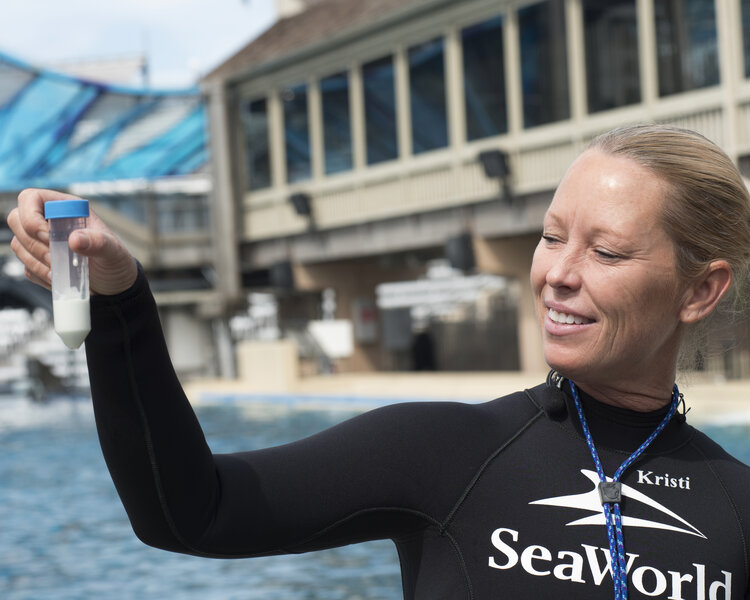Why some marine scientists lament the end of SeaWorld's orca breeding
Loading...
SeaWorld’s decision to end its orca breeding program was broadly lauded by conservationists as progress, but it has left some marine scientists disappointed.
SeaWorld, whose Orlando, Fla.; San Diego, Calif.; and San Antonio parks are currently home to 23 captive orcas, made its decision last month amid growing scrutiny of how animals in captivity are treated. Spurred by the release of such documentaries as "Blackfish" (2013) advocates and the public called on policymakers and industry leaders to take greater steps toward animal conservation and welfare. But some say it’s a loss for science.
The oceanic park will only see one more live birth from an already-pregnant orca. While the remaining orcas will be open to researchers for decades to come, many say the wind-down means the gradual loss of vital opportunities to gain insights that could help killer whales in the wild.
Dawn Noren of the National Marine Fisheries Service's Northwest Fisheries Science Center in Seattle, is one of them. Ms. Noren studies how female orcas pass toxins to their calves via their milk.
"It's really difficult to publish [scientific papers] with one [nursing whale]. I really was hoping for a couple more, but that is what it is," Noren told the Associated Press.
SeaWorld's experience in keeping or breeding orcas in captivity is unrivaled across the globe. SeaWorld parks have every captive orca in the United States bar one. Canada, Japan, and Europe’s captive orcas have not been available to researchers.
SeaWorld will maintain its program to support existing research projects on hearing, heart rates, and blood in the animals, said Chris Dold, SeaWorld's chief zoological officer.
"There won't be an immediate crunch," he said, yet adding that over time "there's a loss of this resource to society and science."
But for conservationists, SeaWorld’s decision to end its breeding program and phase out live orca shows was a major boon for a broader trend in the entertainment and farming industry that is edging toward a more humane economy.
"The announcement today is the humane economy at work, where businesses ... realize that doing right by animals is going to eliminate risk and provide economic opportunity," Wayne Pacelle, executive director of the Humane Society of the United States, a former critic that has partnered with SeaWorld in the theme park’s new initiative, told the Monitor.
"At the root of it is an emerging consciousness among consumers/voters," he adds. "They’re demanding more from decisionmakers and wanting companies to do better on animal welfare," Mr. Pacelle says.
Zoos also have begun closing exhibits that feature so-called charismatic species – large animals with popular appeal, such as elephants – in an acknowledgement that they can't adequately provide for them, the Monitor's Jessica Mendoza wrote. As of 2014, roughly one third of the 224 zoos accredited by the nonprofit Association of Zoos and Aquariums had elephant exhibits, compared with more than half of 147 facilities in 1989, according to The Wall Street Journal.
In the farming industry, some states have begun outlawing the use of cramped cages for pigs and chickens, along with other husbandry practices considered inhumane, Fabien Tepper reported for the Monitor in 2014.
Joel Manby, SeaWorld Parks and Entertainment chief executive officer, said his company’s decision was in line with a shift in public consciousness. "Customers visit our marine parks, in part, to watch orcas. But a growing number of people don't think orcas belong in human care," he wrote, in an op-ed for the Los Angeles Times after the decision.
However, that Capitol Hill lawmakers may completely ban orca breeding in such states as Washington and California is a concern to Grey Stafford, the soon-to-be president of the International Marine Trainers' Association. He told the Associated Press that similar bans on captive breeding programs have hurt the rehabilitation of species such as the California Condor.
"Those bills can have unforeseen and unintended consequences if and when the next species has a population crash in the wild. It ties the hands of state agencies and sanctuaries and places like SeaWorld to act," Dr. Stafford said.
This report contains material from the Associated Press.








